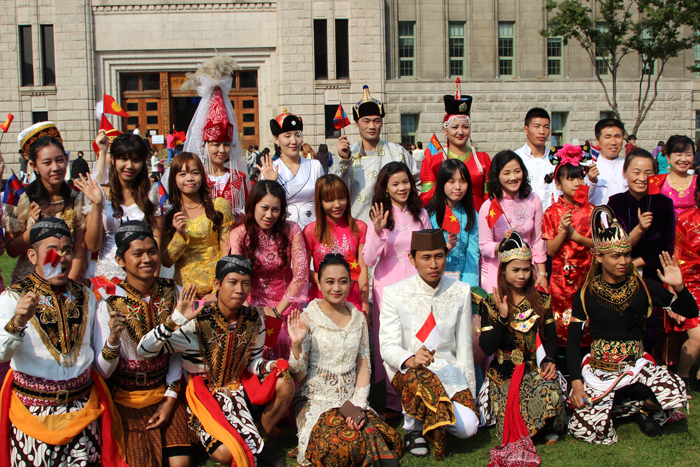
Types of family immigration, the most common form of foreign migration in OECD member countries, include formation of new families between Koreans and foreigners, family accompaniment and family reunions. (image: Hyundai Motor Chung Mong-Koo Foundation)
SEOUL, Oct. 31 (Korea Bizwire) — The number of foreign immigrants arriving in South Korea in a family unit has significantly increased in recent years, official data showed Thursday.
According to a report by the Migration Research & Training Center, the number of family-related visas issued by the South Korean government for foreigners surged from 189,112 in 2010 to 334,317 last year, marking a growth rate of 76.8 percent.
Types of family immigration, the most common form of foreign migration in OECD member countries, include formation of new families between Koreans and foreigners, family accompaniment and family reunions.
F-6 marriage migrant visas accounted for the largest 37.7 percent of family-based visas issued in South Korea, followed by F-1 family visit or accompaniment visas (32.2 percent), the report said.
It noted 30.4 percent of family immigration visa holders reside in Gyeonggi Province, followed by Seoul (20.7 percent), Incheon (6.4 percent) and South Gyeongsang Province (6.1 percent).
The center also analyzed Statistics Korea’s 2017 residence and employment data for foreign immigrants and found that 64.4 percent had spouses.
Of the married immigrants, 67.5 percent were living with their spouses in South Korea, it said.
The report also found 48.7 percent of the married foreign immigrants were living in South Korea with their children, while 40.3 percent had children residing abroad.
Only 20.4 percent said they were living here alone, and 79.6 percent said they were living here with more than one member of their own or spouses’ families.
The report then advised that the Seoul government offer more opportunities for foreign long-term stayers leading an exemplary life in South Korea to invite their families from abroad.
(Yonhap)






